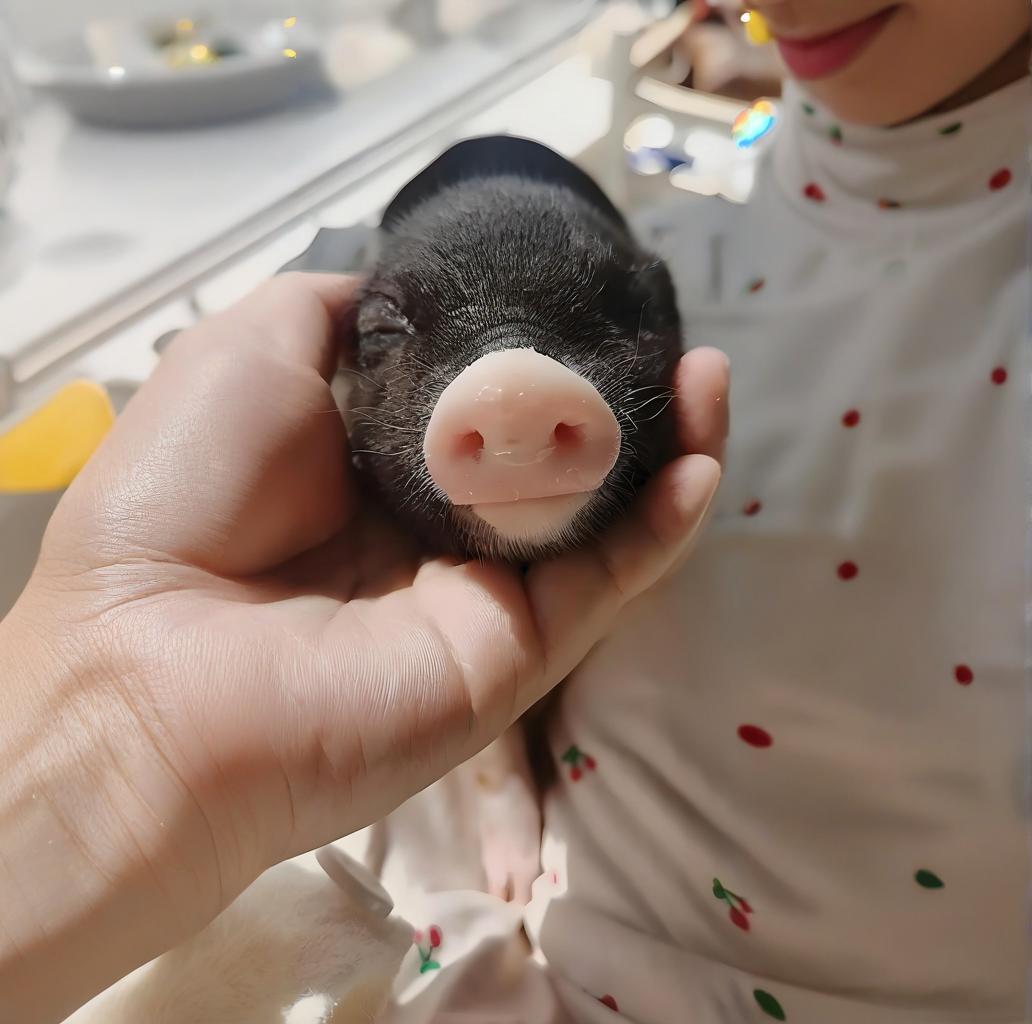As pets, miniature pigs are the main ones. The following is a detailed introduction to miniature pigs: 1. Basic information
1. Basic information
Chinese name: miniature pig
Alias: miniature pig, seven-mile fragrance, ten-mile fragrance
Biological classification: Artiodactyl order, Suidae, genus Sus, omnivorous mammal
2. Physical characteristics
Body shape: Miniature pigs are short, with short and short bodies, wide and slightly concave backs and waists, large and drooping abdomens but not dragging on the ground, short and thin limbs, and slender tails like rat tails. Purebred fragrant pigs weigh only 50~60kg when grown, with a height of about 48cm, a length of about 93cm, and a chest circumference of 96cm.
Coat color: The coat is all black, with some having white lips and white extremities. There are also white miniature pigs. The color is generally black and white, and the black is in patches. Some individuals have parallel light lines on the upper edge of the corners of the eyes, and the head to the front 1/2 or 1/3 of the neck and the buttocks are black, with white spots in the middle of the face or white lines extending to the tip of the nose (some pigs have black spots of varying sizes between the back and waist). There is a 2~5cm wide black-based white-hair gray band at the junction of black and white, and the fur is fine and soft.
Head features: light and small head, slender mouth, most pigs have flat foreheads without wrinkles. Some individuals have parallel shallow lines on the upper edge of the corners of the eyes, small and thin ears, and short and thick necks. 3. Living habits
3. Living habits
Personality: The small fragrant pig is lively and active, but timid and easily frightened. It likes a quiet, dry and clean breeding environment. They are very smart and human. They can recognize their owners. As long as the owner treats it well, it will also repay the owner with excellent performance.
Diet: The small fragrant pig is an omnivore, tolerant of roughage, mainly green feed, and can also eat cat food, dog food, porridge, green vegetables, carrots, etc.
Hygiene habits: The small fragrant pig likes cleanliness very much. After birth, it knows that there must be a special place to go to the toilet, and it will never eat, drink, defecate and urinate in the same place.
IV. Growth and reproduction
Sexual maturity time: Small fragrant pigs mature early, sows first estrus at 4 months old, and can estrus and mate at 4 to 6 months old; boars can mate for the first time at 170 days old.
Reproductive capacity: Sows give birth to 4 to 6 piglets in their first litter, and multiparous sows give birth to 5 to 8 piglets. Boars will mount and chase sows at 2 months old and weigh about 8 kg. Sows go into estrus at 3 months old, and the estrus cycle is 18 to 21 days, which lasts for 4 days. They mate at 4 months old, and the average gestation period is 114 days.
V. Main value
Edible value: Small fragrant pigs have thin skin and a lot of meat, thin bones and crisp skin, tender meat, delicious and sweet taste. They are the best raw materials for roast suckling pigs and precious experimental animals. Its protein content is as high as 21.8%, which is much higher than that of ordinary pork; its fat content is extremely low, about one-fourth of that of ordinary pigs.
Medical value: The skin structure, cardiovascular system, digestive system, bone development and mineral metabolism of the miniature pig are highly similar to humans, and the high homology of genetic composition makes it gradually become an important model for medical research. The miniature pig can be used to study human acute myocardial infarction, diabetes, etc.
Emotional value: The miniature pig is very friendly to humans and other animals, easy to train, has a very regular lifestyle, eats, sleeps and defecates at fixed times, and is easy to become a part of the family and integrate into the daily life of the owner.
VI. Breeding precautions
Feed: Barley, rice bran, bean skin and other roughage should be the main feed, and weaned piglets should be fed with compound feed. Implement scientific feeding, regular and quantitative feeding.
Environment: Keep a quiet, dry and clean breeding environment. The pig house should be built higher than the general pig house. In summer, a shade shed should be built, and in winter, a plastic shed should be used to increase the room temperature.
Disease prevention and control: Early prevention should be achieved when there is no disease, and early treatment should be done when there is disease. Disease prevention should be carried out strictly according to the conventional livestock and poultry epidemic prevention procedures.
In short, miniature pigs have become the pet choice of more and more people due to their unique body shape, personality and living habits. When raising miniature pigs, you need to pay attention to issues such as feed, environment and disease prevention to ensure their healthy growth.
Categories: pets
